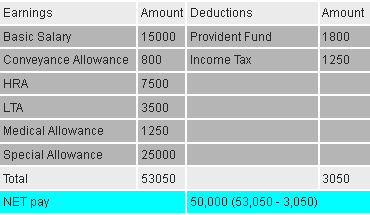Photographs: Rediff Archives Anil Gupta, Am22Tech.com
This article is aimed at clearing doubts over how a bank calculates your net income while calculating the eligibility for total home loan amount. Normally, all banks provide home loans up to 60 times your monthly net income.
Scenario
- You have a monthly in-hand (take home) salary as Rs 50,000 and you are looking for a home loan of about Rs 30 lakh.
- Your gross monthly income might be much more than Rs 50,000 per month but that does not matter while calculating the net income.
- You don't have any other loan like car or personal loan on your name.
- Bank rules say that you are eligible to get 60 times your monthly net income as loan.
Well, all sounds good till the time you are talking to your bank executive or an agent over phone for your eligibility. They ask you for your net income, you answer Rs 50,000 per month and they immediately say that you are eligible for a loan that is 60 times your monthly net income, that is, Rs 30 lakh. You are excited that everything is going as per your expectations and think you will get the amount you were looking for.
Click NEXT for more
Courtesy: Am22tech.com
Here's how banks calculate home loan eligibility
But things change dramatically when you have actually applied for loan by submitting your documents along with salary slips and have paid the loan processing fees. The bank will call you and evaluate your loan eligibility once again and this time it will come out to be much less than what was communicated to you over phone.
You start wondering about what has changed? You salary slips still show the same Rs 50,000 as net income and you don't have any other loan. Then how come the eligibility has come down?
Is the bank not interested in giving out that much loan or the rule of 60 times your net income is just a marketing gimmick? Read on to find out.
Click NEXT for more
Here's how banks calculate home loan eligibility
The catch in calculating your net income.
The catch could be anything from a bank's marketing strategy to attract customers or your low credit score. But most of the times, it is your salary components, which play a spoilsport.
You might be getting a net income of Rs 50,000 per month, but there are some components that may not qualify for adding to your home loan eligibility.
Normally, a salary is a total of following components:
- Basic salary
- HRA (House rent allowance)
- LTA (Leave travel allowance)
- Medical allowance
- Performance bonus
- Conveyance allowance
- Special allowance: It could have different names in different companies like city compensatory allowance etc.
- Food coupons
- PF (provident fund) shown as a deduction in salary slip
- Any other allowance
Click NEXT for more
Here's how banks calculate home loan eligibility
A normal income slip (one-month) in our example might look like this (I have taken all sample values):
Now, the components, which most banks do NOT consider while calculating your net income, are LTA and medical allowances.
So, even though your salary slips show Rs 50,000 as net income, bank will NOT consider LTA and medical allowance as money which would be available to you for spending on loans, that is, they believe that you will actually spend these LTA and medical allowances on the activities which they are paid for.

Click NEXT for more
Here's how banks calculate home loan eligibility
Hence, what bank will do is, they will deduct these amount from your payslip and arrive at your net income as follows:
Now, if you calculate your eligibility will be equal to Rs 27,15,000 (45,250 * 60)
Which is lower than earlier eligibility by about 10 per cent, that is, Rs 2,85,000.
Now, if you had planned your finances keeping in mind that you would get a loan of Rs 30 lakh by your bank and manage other money yourself, you now would need to pool in Rs 2,85,000 more.
I hope you would have understood the concept. I would urge you to keep these calculations in mind and do not blindly believe what bank sales executives commit as they are more interested in bringing a client to bank.

You will get to know these details only when you would have actually paid the non-refundable processing fees of the bank. You would have no option but to go on with it and find out other ways of financing the deficit amount.
Comments and suggestions on the message board below are most welcome.






Comment
article